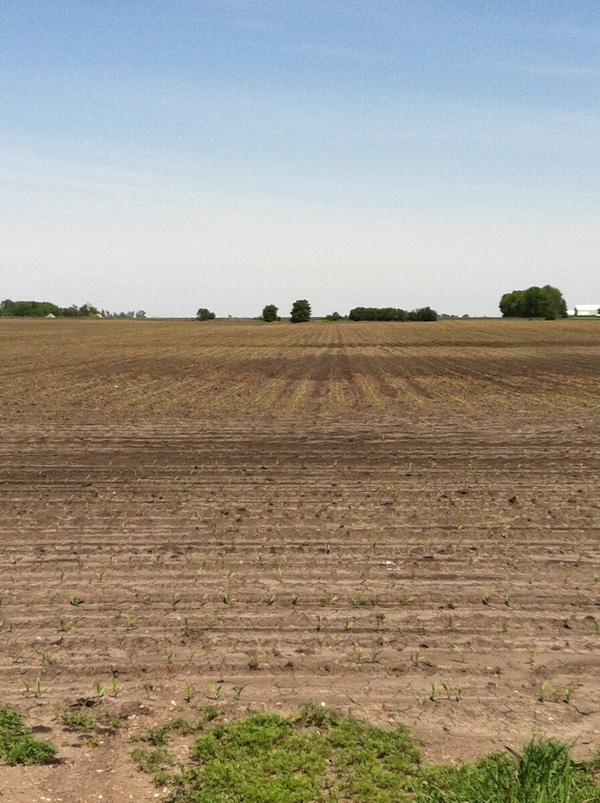May 22, 2012

Several reports of losses in corn stand due to seedling disease are being reported from eastern Iowa. In the May 15 Crop Minute Roger Elmore reminds us that we have had a long corn planting season that began in mid-March and is still going in mid-May. Most of the seedling disease issues that are being reported are from fields that were planted April 23-27, just before we had a period of cold, wet conditions and soil temperatures dipped back down below 50° F.
What should you be looking for?
Affected seedlings tend to be scattered in the wetter areas of the field. Growth stage ranges from V1 to V3. The seedlings are yellow and wilted, or dead. When the seedling is dug up, the mesocotyl is rotted and nodal root growth development may be poor.
Remember, the mesocotyl is very important in the early growth of a corn seedling. It acts as a pipeline for water and nutrients between the radicle and seminal root system and the growing point of the developing seedlings. Nodal roots become visible at around V2 but only become the dominant root system at around V6 (Abendroth et al., 2011).
What pathogen(s) is responsible?
Samples received by the Iowa State University Plant Disease and Insect Clinic and Robertson Lab have been plated. Thus far the pathogen causing seedling disease appears to bePythium spp.
There are numerous species of Pythium that can affect corn, and many of these species also cause disease on soybeans. Over the next few months, the Robertson Lab will identify the isolates collected down to the species level. We will also assess the fungicide sensitivity of the isolates we collect from corn since research from Ohio State University (OSU) found a significant variation in sensitivity to commonly used seed treatment fungicides within and amongst species. Thus, a seed treatment might provide adequate protection against seedling disease in one field, but may not be sufficient in another field.
Numerous Fusarium species and a few Rhizoctonia spp. may also cause seedling disease of corn. Similarly, research at OSU has found sensitivity to seed treatments varies within and amongst Fusarium spp.
Soybean damping off
We have just received our first samples of soybean damping off. These were very early planted beans from two fields in northern Iowa. We will be plating these samples to determine the pathogen(s) responsible. Seed quality may have been an issue in these two cases. Information from several sources, including the Iowa State University Seed Testing Laboratory, suggests that soybean seed quality is below average this year, probably due to the overly dry conditions during the harvest season. It is well known that lower-quality soybean seed is more vulnerable to seedling disease, and is more likely to respond to fungicidal seed treatment.
Disease survey
Survey of seedling diseases of corn and soybean
This is a reminder that I am againlooking for soybean fields with seedling disease issues for a North Central Region research project on soybean seedling disease that is being funded by USDA-NIFA and the United Soybean Board. In collaboration with other researches in the North Central region, the Robertson and Munkvold labs are identifying the major species causing seedling disease on soybean in the region, what environmental factors favor infection by each species and subsequent disease development and assessing the sensitivity of each species to seed treatment fungicides. In our soybean seed treatment studies, which are being funded by the Iowa Soybean Association, we are also collecting seedling pathogens that will be identified and screened for fungicide sensitivity.
In addition to diseased soybean seedlings, we are also interested in collecting samples from cornfields with damping off for similar studies.
If you know of a field with seedling disease issues, please contact me at 515-294-6708 or [email protected] so we can coordinate sampling the field.
References
Abendroth et al. 2011. Corn growth and development.
You May Also Like




